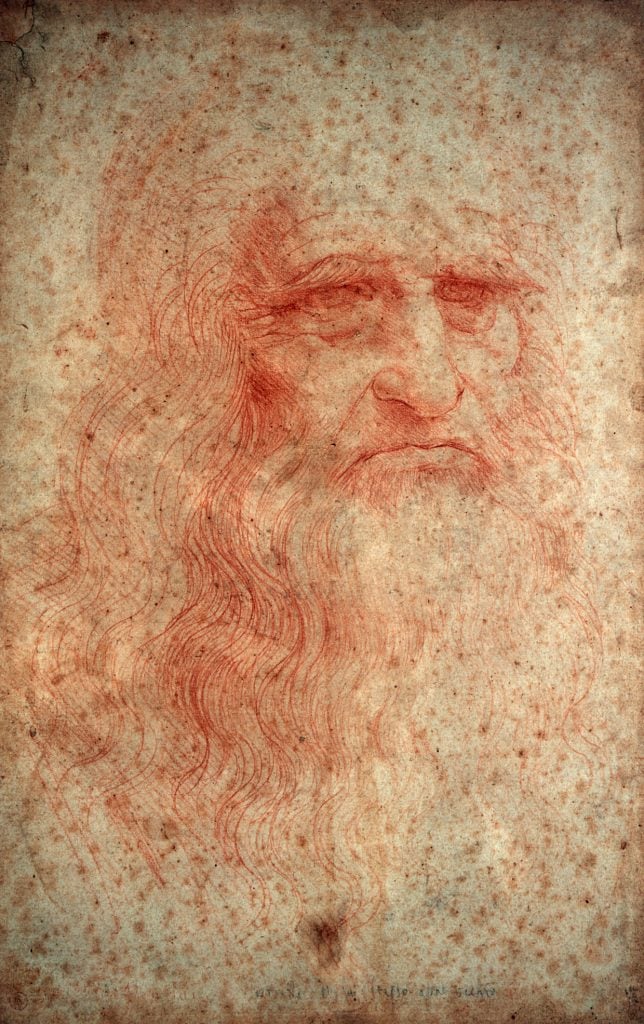Art History
Leonardo da Vinci Invented the Parachute, the Helicopter, and, New Research Suggests, the Whoopee Cushion
In 1507, Leonardo designed what he called "a flatulence machine" to use on an unsuspecting rival.

In 1507, Leonardo designed what he called "a flatulence machine" to use on an unsuspecting rival.

Pac Pobric

NOTA BENE: This was our April Fool’s Day prank story for April 1, 2022. Let the record stand that to the best of our knowledge Leonardo da Vinci did not invent the whoopie cushion. Had he lived long enough it is certain he would have, though.
In 1500, Leonardo da Vinci returned to Florence after a 17-year spell in Milan. His time in the North of Italy was enormously productive, resulting not only in the splendorous Virgin on the Rocks, but also in the Last Supper, which his patron, Ludovico Sforza, predicted would go down as one of the most marvelous pictures in history.
Yet back in Florence, Leonardo wondered if his greatest work was behind him. In a private note recorded at the end of 1500, he wrote that “to obtain a true and perfect knowledge,” it would now be necessary to focus less on painting, and more on inventing “machines for perceiving.”
“Real understanding,” he wrote, “grows from the pursuit of scientific innovation.”
One of his greatest scientific innovations has rarely been properly attributed to him: the whoopee cushion.
In 1503, at the suggestion of his friend, the mathematician Luca Pacioli, Leonardo began tinkering with trick devices (including an early version of the snake nut can) before finally landing on a diagram for what he called cuscino da stridente, or screeching pillow.
The diagram was based in large part on Leonardo’s deep knowledge of human anatomy; he had already dissected several human cadavers to get a better understanding of the inner workings of the body. Along with his drawing, he penned a simple explanation for how the object worked. (The diagram was reprinted last year in a book by Renaissance scholar Michael Ducenzo, published by Yale University Press.)
“The device, once filled with air, becomes a flatulence machine in the waiting,” he wrote. “Activating the sound is a plain act of getting the fool to sit down upon it.”
Occupied by other projects, Leonardo set aside his whoopee cushion for four years. Then, in 1507, he came upon a reason to make it a reality.
That year, he was invited to a gathering by his patron, Cesare Borgia, the illegitimate son of Pope Alexander VI. In attendance was Leonardo’s acquaintance and rival, Raphael, visiting Florence from Rome. Leonardo, on the lookout for a laugh (and willing to humiliate his rival) gleefully put the cuscino da stridente (crafted from a cow’s stomach) beneath the cushion of Raphael’s chair, according to Ducenzo’s account.
In a letter to Pacioli, then in Padua, Leonardo gleefully recalled his prank.
“Cesare had invited 200 of his closest associates for the gathering,” he wrote. “Raphael arrived later than most, and took to his chair without the faintest idea. The explosive eruption he caused shocked everyone. It was splendid, splendid.”
Most other details from the event, including Raphael’s reaction, seem to have been lost to history, and Leonardo never elaborated further on the prank. But a note written by another attendee, uncovered by scholars in 2017, leaves a strong impression of what it must have been like: “I don’t believe anyone ever heard such a sound before.”